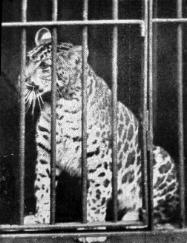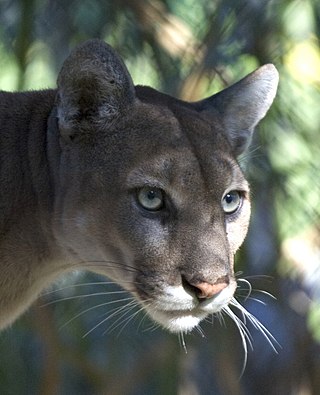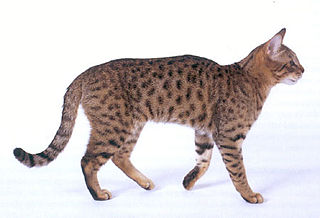
The cougar, also known as the puma, mountain lion, catamount, or panther, is a large cat native to the Americas, second in size only to the stockier jaguar. They are not technically grouped with the "true" big cats, as they are slightly smaller than other big cats, and they lack the vocal physiology to roar. Its range spans the Canadian Provinces of the Yukon, British Columbia, and Alberta, the Rocky Mountains, and other areas in the Western United States. Their range extends further south through Mexico, where they are found in nearly every state, to the Amazon Rainforest and the southern Andes Mountains in Patagonia. The puma inhabits every mainland country in Central and South America, making it the most widely distributed large, wild, terrestrial mammal in the Western Hemisphere, and one of the most widespread on planet Earth. It is an adaptable, generalist species, occurring in most American habitat types. It prefers habitats with dense underbrush and rocky areas for stalking but also lives in open areas.
The term "big cat" is typically used to refer to any of the five living members of the genus Panthera, namely the tiger, lion, jaguar, leopard, and snow leopard, as well as the non-pantherine cheetah and cougar.

A pumapard is a hybrid of a cougar and a leopard. Both male cougar with female leopard and male leopard with female cougar pairings have produced offspring. In general, these hybrids have exhibited a tendency to dwarfism.

A felid hybrid is any of a number of hybrids between various species of the cat family, Felidae. This article deals with hybrids between the species of the subfamily Felinae.

In 2005, Winnie was the name given to a supposed big cat sighted in the Veluwe region of the Netherlands.
In Australian folklore, the Blue Mountains panther or Lithgow panther is a big cat said to exist by residents of the Blue Mountains area, west of Sydney, New South Wales, for over a century.

The Florida panther is a North American cougar population in South Florida. It lives in pinelands, tropical hardwood hammocks, and mixed freshwater swamp forests. It is known under a number of common names including Florida cougar, and Florida puma.

In British folklore and urban legend, British big cats refers to the subject of reported sightings of non-native, typically large felids feral in the United Kingdom. Many of these creatures have been described as "panthers", "pumas" or "black cats".

The North American cougar is a cougar subspecies in North America. It is the biggest cat in North America. It was once common in eastern North America and is still prevalent in the western half of the continent. This subspecies includes populations in western Canada, the western United States, Florida, Mexico and Central America, and possibly South America northwest of the Andes Mountains. It thus includes the extirpated eastern cougar and extant Florida panther populations.
Killman Zoo is a privately owned zoo approximately 4 kilometres or 2.5 miles north of Caledonia in Haldimand County, Ontario, Canada.
A white panther is a white specimen of any of several species of larger cat. "Panther" is used in some parts of North America to mean the cougar, in South America to mean the jaguar, and elsewhere to mean the leopard. A white panther may then be a white cougar, a white jaguar, or a white leopard. The genus name Panthera is a taxonomic category that contains all the species of a particular group of felids, but as a general term "panther" is also used for other felids, more commonly for melanistic individuals, but also for white or normally coloured individuals.

Puma is a genus in the family Felidae whose only extant species is the cougar, and may also include several poorly known Old World fossil representatives. In addition to these potential Old World fossils, a few New World fossil representatives are possible, such as Puma pumoides and the two species of the so-called "American cheetah", currently classified under the genus Miracinonyx.

Carolina Tiger Rescue is a nonprofit wildcat sanctuary in Pittsboro, North Carolina, that offers public tours and field trips and is home to rescued tigers, lions, cougars, leopards, caracals, servals, bobcats and other wild animals. Over 20,000 visitors come to the sanctuary each year for guided tours, field trips, summer camps, volunteering and corporate work groups. Their mission is saving and protecting wild cats in captivity and in the wild. They work toward a day when wild cats are living in their native habitat and are not exploited by humans. Carolina Tiger Rescue is Global Federation of Animal Sanctuaries (GFAS) and USDA accredited. The Executive Director is Kris Marino.

The eastern cougar or eastern puma is a subspecies designation proposed in 1946 for cougar populations in eastern North America. The subspecies as described in 1946 was declared extinct by the U.S. Fish and Wildlife Service in 2011. However, the 1946 taxonomy is now in question. The Canadian Wildlife Service has taken no position on the taxonomy. Cougars are currently common in western North America and may be expanding their range. Individuals are occasionally seen as vagrants in eastern North America.

Many different species of mammal can be classified as cats (felids) in the United States. These include domestic cat, of the species Felis catus; medium-sized wild cats from the genus Lynx; and big cats from the genera Puma and Panthera. Domestic cats vastly outnumber wild cats in the United States.

Big Cat Rescue Corp., also known as BCR and previously known as Wildlife on Easy Street, Inc., operates an animal sanctuary in Hillsborough County, Florida, United States, which rescues and houses exotic cats, and rehabilitates injured or orphaned native wild cats. It was founded by Don Lewis and Carole Baskin in 1995.
A pet exotic felid, also called pet wild cat or pet non-domestic cat, is a member of the family Felidae kept as an exotic pet.

P-22 was a wild mountain lion who resided in Griffith Park in Los Angeles, California, on the eastern side of the Santa Monica Mountains. P-22 was first identified in 2012 and was the subject of significant media attention, including numerous books, television programs and other works of art. P-22 was often recorded prowling in the Hollywood Hills neighborhood of Los Angeles. He was monitored by a radio collar. P-22 remained in Griffith Park for ten years until he was captured on December 12, 2022. He was then euthanized on December 17, 2022, after examinations revealed he was suffering from traumatic injuries consistent with being hit by a car, in combination with several longer-term health issues.
















